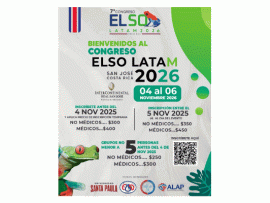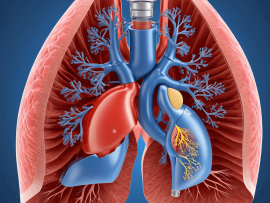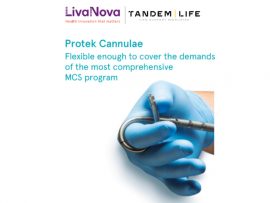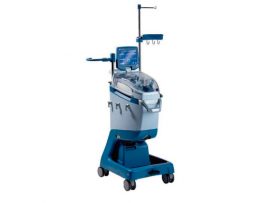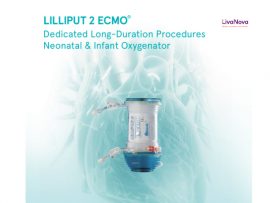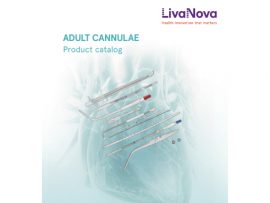Abstract Objectives To describe outcomes in patients who received venoarterial extracorporeal membrane oxygenation (VA-ECMO) for cardiogenic shock and to evaluate outcomes following programmatic changes. Design A retrospective cohort study. Setting..
Read MoreAbstract Extracorporeal life support (ECLS) requires specialized cannulas for vascular access that are dependent on each patient’s needs, size, and unique vascular anatomy. There are currently no commercially available drainage..
Read MoreAbstract Mixed shock has been identified by the Shock Academic Research Consortium (SHARC) as a “high-risk, understudied population”. It develops in around one-quarter of patients with cardiogenic shock and has a higher..
Read MoreAbstract Background While the clinical effectiveness of extracorporeal cardiopulmonary resuscitation (ECPR) for out-of-hospital cardiac arrest (OHCA) has gained increasing attention, its real-world utilization, patient selection, and system-level implementation remain incompletely..
Read MoreAbstract Background Extracorporeal cardiopulmonary resuscitation (ECPR) can improve outcomes in refractory out-of-hospital cardiac arrest (OHCA), but access is limited by geographic and system constraints. We aimed to compare the potential..
Read MoreAbstract Introduction The increasing integration of Artificial Intelligence (AI) and Virtual Reality (VR) in healthcare education offers innovative ways to enhance collaborative learning and improve patient safety. This narrative review..
Read MoreAbstract Introduction Standard “yes/no”' checklists fail to meet their purported goals of enhancing patient safety because they enable inattentive completion and complacency. The mere presence of a check mark is..
Read MoreAbstract Objective To discuss technical strategies and considerations to facilitate intraoperative extracorporeal membrane oxygenation (ECMO) management during lung transplantation. Methods We review our institutional approach to the management of intraoperative..
Read MoreAbstract Background Acute kidney injury (AKI) and dysnatremia following pediatric cardiac surgery are common conditions associated with worse outcomes. While the multifactorial etiology of AKI is well-known, the role of..
Read MoreAbstract Background To evaluate the effect and safety of modified ultrafiltration warming technology during pediatric congenital heart disease (CHD) surgery. Methods A retrospective analysis included 68 children (<1 year) who..
Read MoreAbstract Background Despite sternum sparing and without cardiopulmonary bypass, the actual value of minimally invasive coronary surgery (MICS) is still debatable. This study aimed to compare the completeness of revascularization..
Read MoreAbstract Objective To evaluate the effectiveness of venovenous (VV) extracorporeal membrane oxygenation (ECMO) using a dual-lumen cannula coupled with continuous mechanical chest compressions (cMCC) for cardiopulmonary resuscitation and compare it..
Read MoreAbstract Objective To determine if the route of administration of whole blood cardioplegia (cardioplegia) is significantly associated with the frequency of profound transient hypotension (intermittent “vasoplegia”) often observed during cardioplegia..
Read MoreAbstract For patients undergoing extracorporeal membrane oxygenation (ECMO), clot formation is a critical complication requiring high-risk circuit changes. Blood tests used to assess clotting risk may be drawn only four..
Read MoreAbstract Objectives Evaluating blood transfusion practices and their impact on morbidity and mortality across extracorporeal membrane oxygenation (ECMO) configurations. Background As ECMO becomes increasingly utilised in critical care, the ideal..
Read MoreAbstract The correct arterial cannula size for percutaneous femoral venoarterial extracorporeal membrane oxygenation (VA-ECMO) cannulation is imperative for adequate circulatory support. We aimed to describe the relationship between cannula size,..
Read MoreAbstract Objetives Extracorporeal membrane oxygenation (ECMO) after surgery for congenital heart disease (CHD) provides hemodynamic support to patients when their myocardial function is temporarily affected. Postoperative infections in children with..
Read MoreAbstract Background: The use of cell salvage reduces homologous blood transfusions during operations and avoids associated complications. Therefore, autotransfusion is an integral part of Patient Blood Management (PBM). The..
Read MoreAbstract Infection cases have been reported where Legionella spp. and NTM (non-tuberculous mycobacteria) increased due to the contamination of circulating water in cold/heated water supply systems for extracorporeal circulation used in cardiac..
Read MoreAbstract Background Extracorporeal membrane oxygenation (ECMO) provides mechanical circulatory and respiratory support. However, thrombus formation in the circuit can lead to hemorrhagic complications, requiring improvements in ECMO anti-thrombogenicity. Few studies..
Read MoreAbstract Introduction Current guidelines advise that anaphylactic shock refractory to traditional treatments may be managed with extracorporeal life support (ECLS), but reports have been exclusive to adults. Case Report We..
Read MoreAbstract Background: Minimally invasive extracorporeal circulation (MiECC) has been introduced to mitigate the inflammatory response and reduce blood transfusion needs compared to conventional cardiopulmonary bypass (CPB) perioperatively. A hybrid system..
Read MoreAbstract Digital ischemia following extracorporeal membrane oxygenation (ECMO) therapy is a known complication with potential devastating long-term sequela. Onabotulinum toxin type A (BTX-A) has been demonstrated to be effective for..
Read MoreAbstract BACKGROUND: Current blood pressure management strategies cannot accommodate large interindividual variations in cerebral autoregulation, which may result in inadvertent cerebral ischemia. A novel optical neuromonitoring device was developed to..
Read MoreAbstract BackgroundCPR-induced consciousness (CPRIC) is defined as consciousness during CPR, ranging from eye opening to combative behaviour and vocalisation, despite the absence of spontaneous circulation. CPRIC has not previously been..
Read MoreAbstract Introduction: In cardiopulmonary bypass (CPB), blood circulation is temporarily maintained by an artificial blood-pumping device during cardiac surgery. Worldwide, approximately half of the CPB procedures utilize either centrifugal or..
Read MoreAbstract OBJECTIVES Cardiogenic shock is still a major clinical challenge, despite the available devices. We developed a minimally invasive, transapical dual-lumened cannula, which can provide antegrade circulatory support and unloading..
Read MoreAbstract Background Studies have proved that artery infusion during CPB operations can reduce lung injury led by CPB surgery. This study was undertaken to investigate the effects of HTK solution..
Read MoreAbstract Introduction It is around 4 PM when the surgeon, having just transferred his afternoon theater patient to the intensive care unit (ICU), approaches the patient’s family with a reassuring..
Read More




